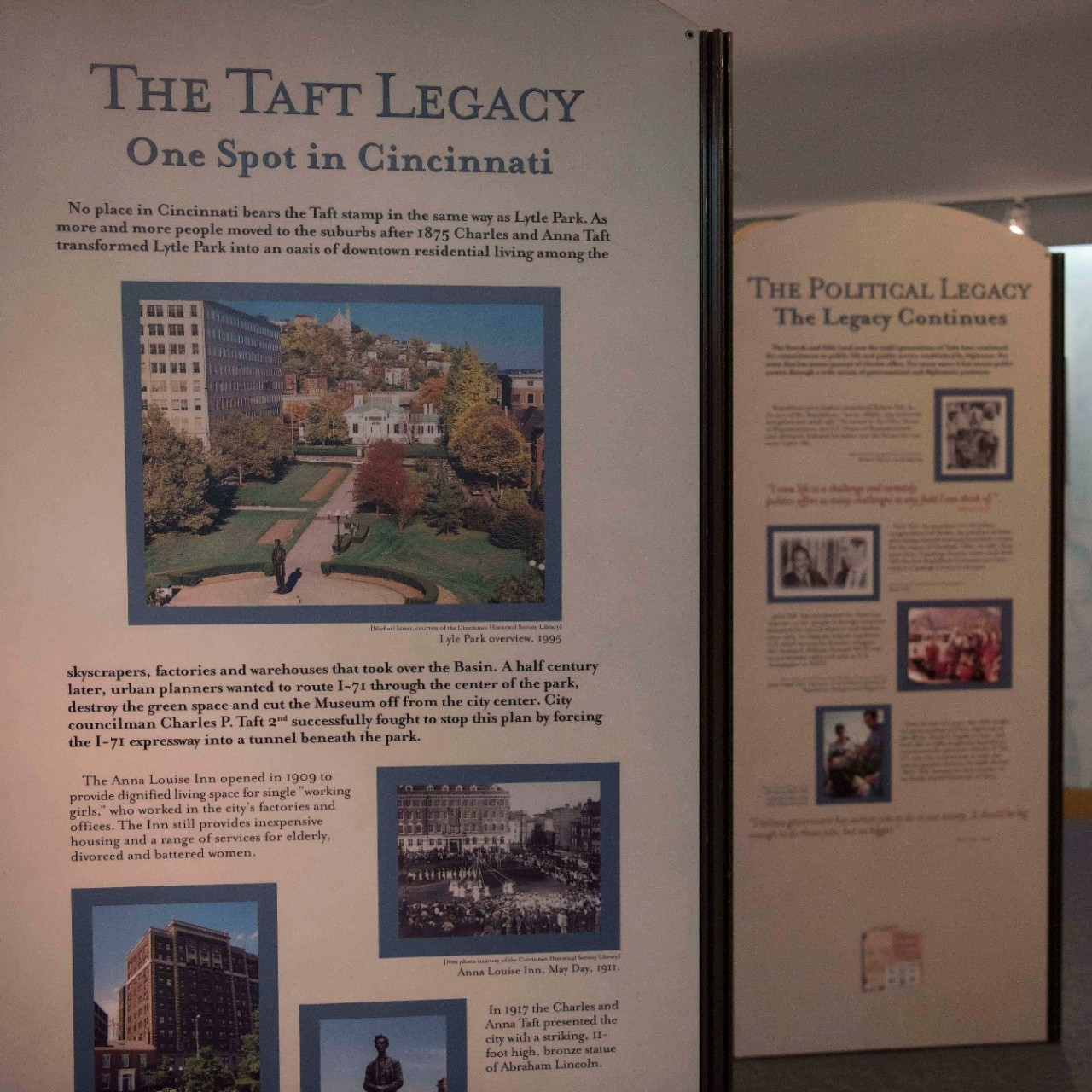

The William Howard Taft Historical Site is one of the few National Historic Sites in the greater Cincinnati area. The one-time home is a hot spot for tourists and locals seeking knowledge on the history of 21st U.S. President (and Cincinnati native) William Howard Taft and his family.
And as part of the National Parks Service, the two-story Greek Revival is also home to a particular job title not typically associated with the indoors—park rangers. Michael Stenke, Seth Frost and Ruth Horstman—all three Northern Kentucky University students in the Master of Arts in Public History (MAPH) program—know there are rangers in the house, though. All three are interning as park rangers at the site.
There are, it turns out, several different ways to approach the job of being park ranger.
Horstman identifies herself as an “interpretive Ranger,” explaining that she takes “information and knowledge from the past and interprets it to create a program to make people understand the history better.”
Stenke, however, describes his job as “walking visitors through a historical narrative of Taft’s life and his family's life.”
Regardless of how individual rangers describe it, though, there are two main components of a park ranger’s job: to preserve the history and integrity of historical sites, and to conduct informative tours for the public in an entertaining and friendly manner.
“We create this interpretive outline,” says Stenke, “by developing our own tour throughout the house—deciding how we want to guide the visitors through. If a family comes in, and they're decked out in their baseball gear, you might tailor your tour to talk more about baseball and how William Howard Taft was involved with baseball.”
Stenke says there are “five full-time people at our site, and then three Pathways people. Me, Seth and Ruth were all a part of the Pathways program. Seth and I are student interns, and Ruth is more of a career Pathways person.”
The Pathways program Stenke refers to is a web-based federal resource that connects students with government internships and jobs centered around their major or field of interests.

Pathfinders was an invaluable aid for all three, but getting the
positions was no walk in the park. “Working
for a federal agency is very different,” Stennke says. “There are a lot of
hoops that you have to jump through. Before I got this job, I probably applied
to over 100 positions.”
“The hard part is making sure to fill out the applications properly,” Horstman states. “Getting any federal job requires a specific resume that is different than traditional civilian resume. My resume is now six and a half pages long. They're just different. The layout is different. What they ask for is different.”
Another thing that is different compared to most jobs is “getting fitted for your uniform pieces, completing all the background checks, filling out all the information and getting fingerprinted.” Stenke goes on to say that you also have to “get a photograph for your federal ID,” which involves not one, but two trips. “We're lucky because we live in Cincinnati, and we have a shared facility where you can go and pick up your ID and get fingerprinted. A lot of parks don't have that ability. So, they often have to drive,” Stenke says.
Overall, “it's a pretty competitive position to get into,” Frost says. “So prior experience in museums always helps. And if you can't get a job in a museum, volunteering is the best way to get your foot in the door.”
Looking closer at what each student does, Horstman says, “On paper, they're not any different. We do exactly the same thing. What makes the difference is our personal projects, as well as our own individual research. Seth is very interested in a different part of history than I am—he tends to focus on military history and presidential history,” she says. “When he gets projects assigned, or when he does personal research, he goes in that direction. I prefer material culture, Civil War and textiles.”
The library at the Taft is expansive, allowing the interns to research various topics. They’re able to seek out more information for their tour, as well as conduct personal research that benefits them in class.
“When the Park Service acquired the site in 1969, they had historians go through all the paperwork, finding housing records with archaeological digs going on,” says Frost. “They wrote down an incredible amount of information about the house and what they were doing. Their diaries are extremely extensive—over 660,000 pieces of paper all stored at the Library of Congress, including William’s presidential papers, his time in the cabinet and the Philippines, and his father's time in the cabinet. His father was the Attorney General and the Secretary of War for President Grant. It's multi-generational.”
The Taft family changed the Cincinnati area in ways we can still see today. “After World War I, the Cincinnati Zoo was basically bankrupt. So they bought the zoo with a couple other families in Cincinnati to keep it running,” says Frost. “Charles was the president of the Cincinnati Art Museum for about 20 years. The Taft Theatre, which opened in 1928, he was in charge of basically raising funds to build it.”
Park rangers like Stenke, Frost and Horstman keep the narrative alive at historic sites. They help us appreciate our local history, and, through their work at the William Howard Taft Historic Site, acknowledge and respect the impact the Tafts had on the Greater Cincinnati area.


